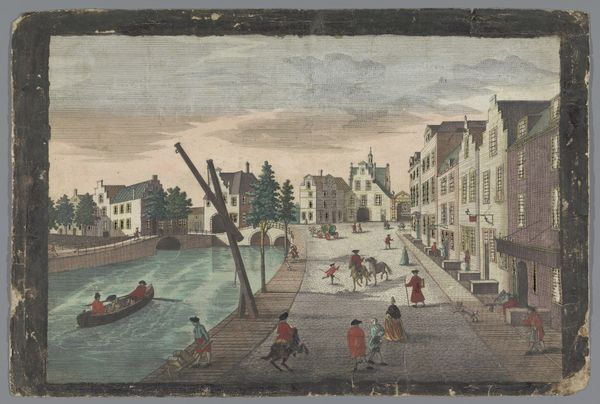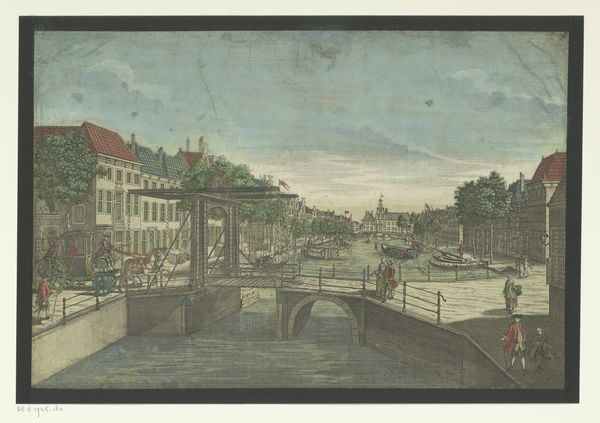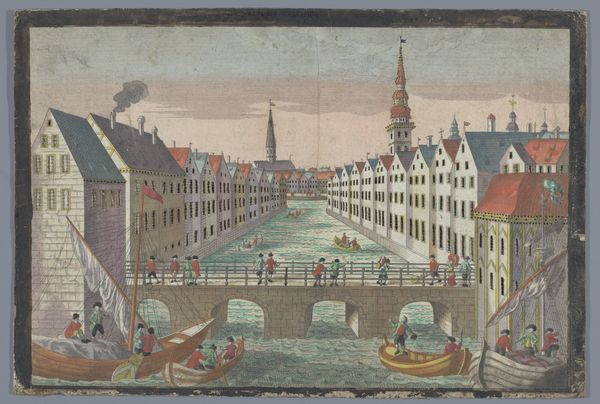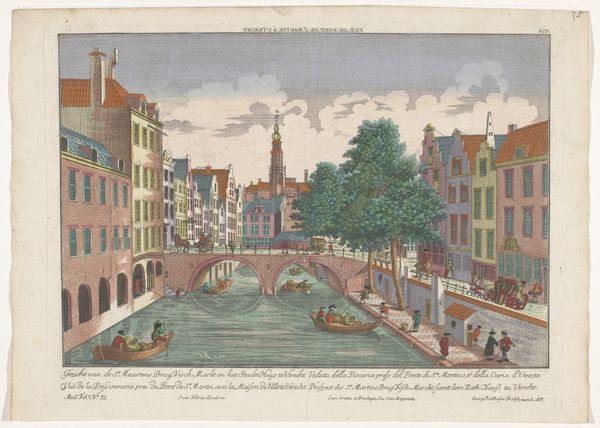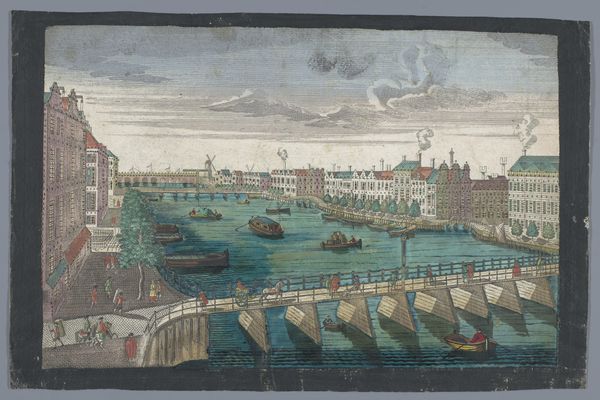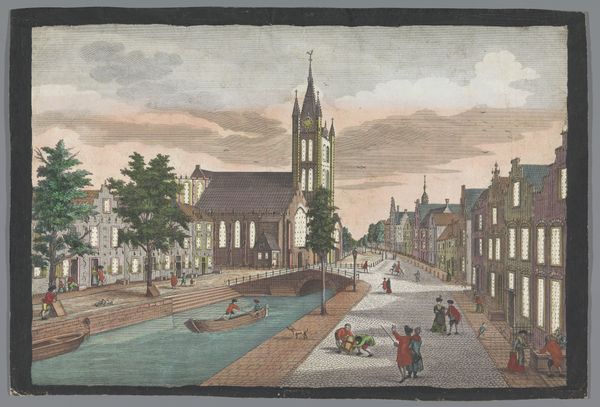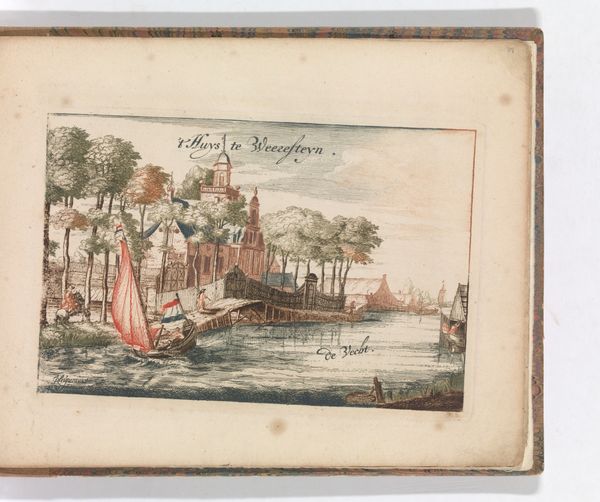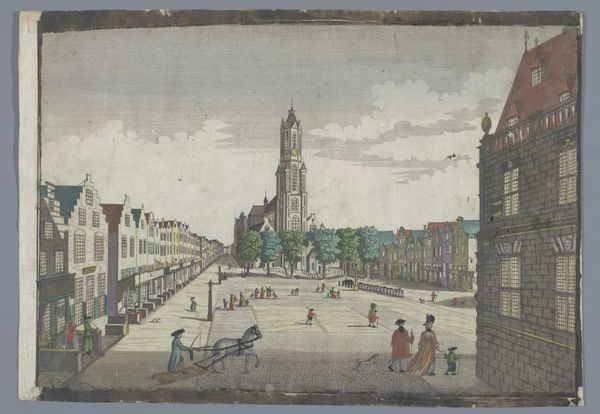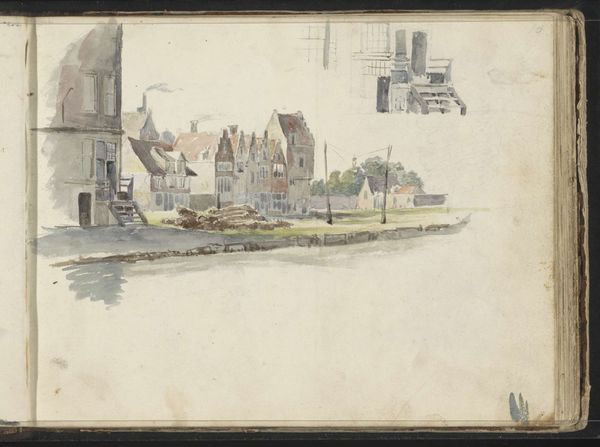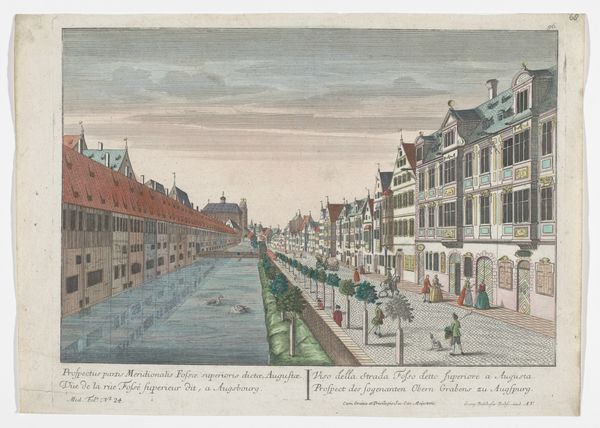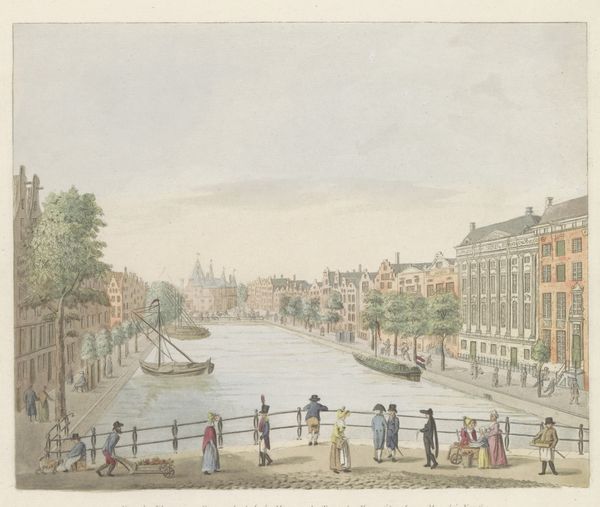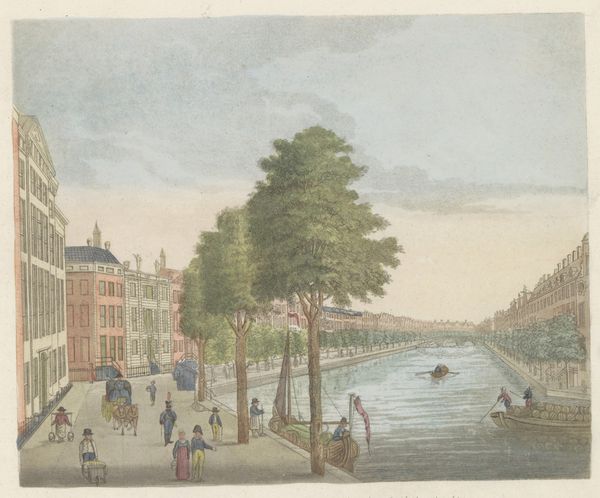
print, etching, watercolor
#
dutch-golden-age
# print
#
etching
#
watercolor
#
coloured pencil
#
cityscape
#
genre-painting
#
watercolor
Dimensions: height 308 mm, width 455 mm
Copyright: Rijks Museum: Open Domain
Georg Balthasar Probst created this print of the Geer Warehouse in Delft sometime in the 18th century. It shows us how mercantile power was structured in the Netherlands during that time. The Geer Warehouse was built by the Dutch East India Company, and prints like this were made and sold to celebrate and promote global trade. We can see how the warehouse dominates the cityscape, and how the waterways were essential for transporting goods. The print uses visual codes to convey the power of the Dutch East India Company. The architecture of the warehouse is imposing, and its prominent location on the canal suggests its central role in the city's economy. The figures in the print are small in comparison to the warehouse, emphasizing the power of the company. Understanding the print requires an understanding of the Dutch East India Company, its role in global trade, and its impact on Dutch society. Historical research, like economic data and archival documents, helps to understand the print and the social conditions that shaped its production. The meaning of art is contingent on this social and institutional context.
Comments
No comments
Be the first to comment and join the conversation on the ultimate creative platform.
